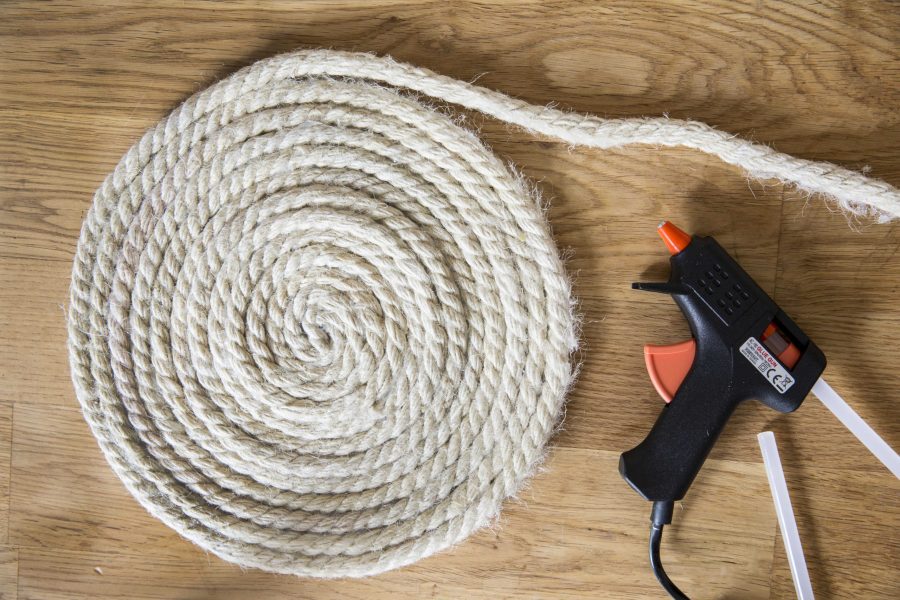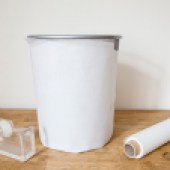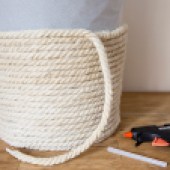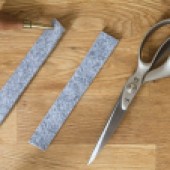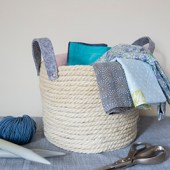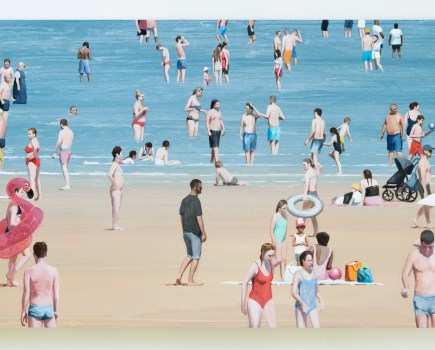By Juliet Bawden. Photography: Antonia Attwood
As a maker it is very easy to become overwhelmed by oddments of fabric and half-finished projects. Where do you store them? As a solution, I decided to make a coiled rope basket. This is a very quick project to make, unlike the traditional way of making a coiled raffia, leaf or rope basket where each coil is painstakingly sewn onto the next. As a seafaring nation it is not surprising there is a tradition of rope making in the uk. The thickness, heaviness and how tightly the rope is twisted when it is being made, will determine just how much weight the completed basket will hold.
The earliest fossilised fragments of ropes date back from 15,000-17,000 years. Man has been making and using ropes for as long as he has been building houses and herding animals. Apart from mechanisation, the process of rope-making, like spinning, weaving, and cloth construction has changed very little over the years. There are four basic steps, preparing the fibres, spinning them together to make the yarn and then twisting the yarns to form strands and then winding the strands.
Unlike traditional basketry where you have the equivalent of a warp and weft similar to weaving, that helps to hold the shape, this basket depends on the thickness of the rope and how well it is stuck together for it to work. Ropes and cords with thinner circumferences are better suited to making smaller baskets. Heavier ropes such as those used for sailing will be much more robust.
You will need:
- Baking paper
- Tape
- Paper scissors
- 8mm x 3 spools jute rope (from Hobbycraft and it comes in 7m lengths)
- Glue gun and glue sticks (Hobbycraft)
- A large saucepan or a bin to form the basket around
- Bradawl
- Split rings
- 2 pieces of felt 3mm deep 27mm wide x 250mm long for the handles (if you can’t find felt this thick you could use webbing or leather)
Steps
1. Turn the glue gun on and insert a glue stick. On a flat surface, start coiling the rope, as you wind it you will need to glue at regular intervals. Place the vessel on top of the base to check that it is the correct size.
2. Cut out the baking paper and use it to cover the outside of the basket. This is to prevent the rope sticking to the basket as you glue it.
3. Place the coiled base under the paper covered bin. Add more coils of rope to the rope base and follow the contours of the bin and build up a basket of rope by gluing into place at regular intervals.
4. Using a bradawl or a tool for making holes in leather, make a hole 10mm from the end of each handle. Attach handles to the top of the basket with basket with split rings or by sewing.
About Juliet Bawden
Trained in textile design, Juliet has a great passion for all things fabric – particularly dyeing, colour and the way it affects our lives. Having grown up in Deal on the Kent coast, her other great love is the sea. Juliet has written a number of craft, style and design books, covering a wide range of disciplines. For more information, visit creativecolour.org.
Check out more coastal-inspired arts and crafts here.

